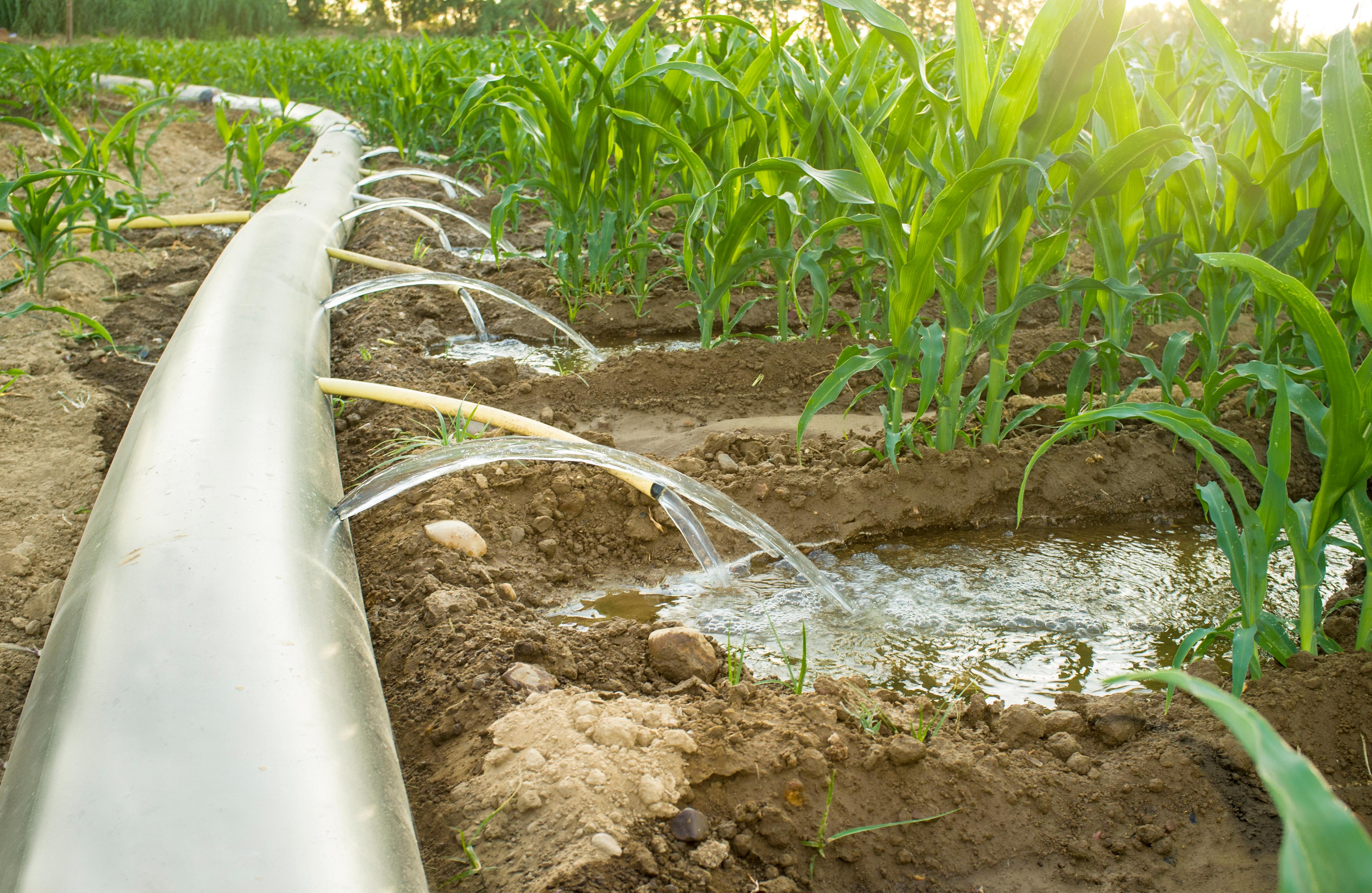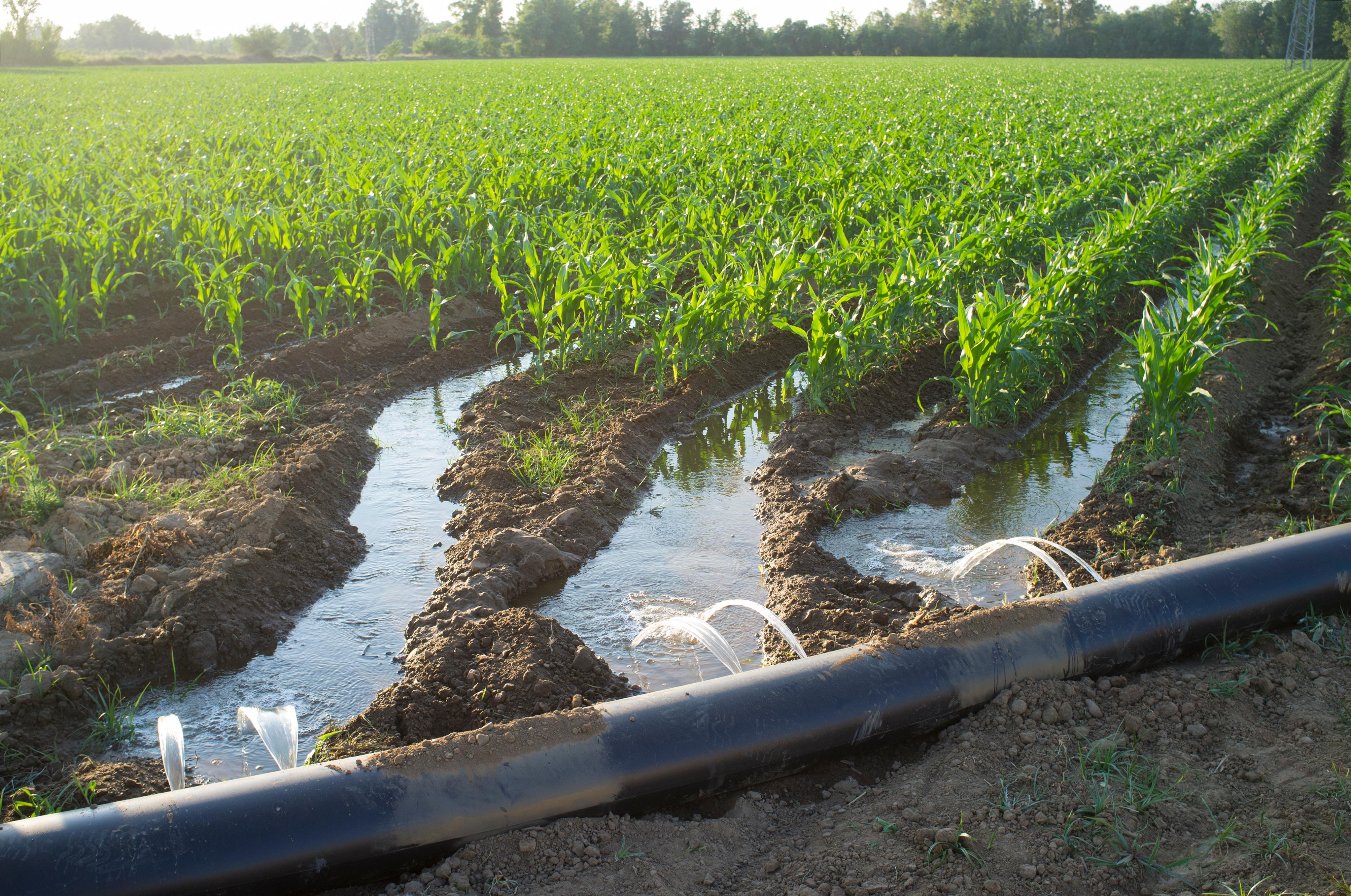Furrow Irrigation Can Help Save Water, But Is It Worth the Labor?
Updated May 20 2020, 2:10 p.m. ET

One of the main duties of any farmers tending to their crops is to properly irrigate (or water) their crops in order to make sure they grow to their best potential. Irrigation can be a tricky process to master for farmers, especially if they have a lot of crops to tend to. It can also be quite expensive.
Thankfully, the days of hauling buckets of water to keep crops watered are over for most. Many farmers have adopted a method known as furrow irrigation. So what exactly does this method entail and what are the advantages? Read more to find out — we cover that all below!
Furrow irrigation is cheap and low-tech.
Furrow irrigation is a type of surface irrigation in which trenches or “furrows” are dug between crop rows in a field. Farmers then flow water down the furrows (often using only the force of gravity), and the water seeps vertically and horizontally to refill the soil reservoir. Flow to each furrow is individually controlled.

Furrow irrigation is particularly suited to broad-acre row crops such as cotton, corn, and sugar cane. It is also practiced in various horticultural industries such as citrus fruits and tomatoes. Furrow irrigation is one of the oldest methods of irrigation because it is furrow irrigation is cheap and low-tech making it particularly attractive in the developing world or places where mechanized spray irrigation is unavailable or impractical.
While furrow irrigation may not be the “hottest” new way to get crops their water, it is one of the cheapest and low tech options for farmers, which is why millions still use the method.

According to the United States Geological Survey, in the United States in 2000, about 29.4 million acres were irrigated by flood irrigation as compared to about 28.3 million acres irrigated by spray irrigation.
Furrow irrigation does come with its disadvantages.
While affordable, furrow irrigation does have some downsides. For one, the water used to irrigate can take a considerable period of time to reach the other end of the row crop, meaning the water has been infiltrating for a longer period of time at the top end of the field than the bottom. This results in poor uniformity of crops with a high application of water at the top end with lower application at the bottom end.

In most cases, the performance of furrow irrigation can be improved through increasing the speed at which water moves along the field (the advance rate). This can be achieved through increasing flow rates or through the practice of surge irrigation. Increasing the advance rate not only improves the uniformity but also reduces the total volume of water required to complete the irrigation.

The process of furrow irrigation is also quite labor-intensive for farm staff. The process of moving furrow irrigation equipment from furrow to furrow alone is enough to exhaust any farmer. Farmers practicing furrow irrigation will need to weigh the pros of cons of a larger labor cost versus water cost.